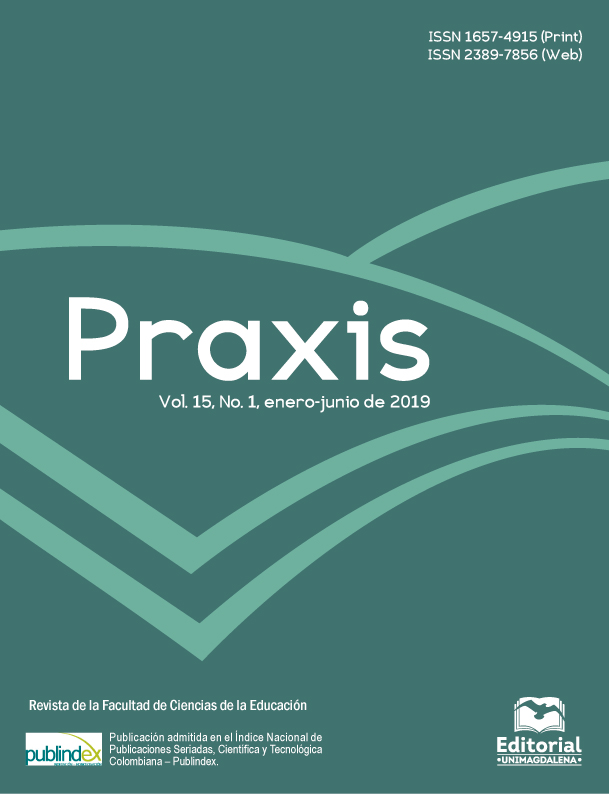Abstract
The aim of this research is to explore the mathematical connections between area manifestation, which pre-service teachers can be established (or not) when solving tasks related to measuring flat surfaces. Pairs of pre-service teachers answered a questionnaire in which they were requested to: (1) measure the area of flat surfaces using two or three different methods, and (2) justify every resolution based on the methods that were used. Results showed that most aspiring teachers prioritize numerical methods and formulas, ignoring geometrical and perceptive methods, can make the task of measuring area easier. In this sense, it can be said that is difficult for pre-service teachers to establish connections between the manifestations of the area.References
Ball, D. L., Lubienski, S. T. y Mewborn, D. S. (2001). Research on teaching mathematics: The unsolved problem of teachers’ mathematical knowledge. En V. Richardson. (Ed.), Handbook of Research on Teaching. (4.a edición) (pp. 433-456). Washington, D. C.: American Educational Research Association.
Ball, D. L., Thames, M. y Phelps, G. (2008). Content Knowledge for Teaching: What Makes It Special? Journal of Teacher Education, 59(5), 389-407.
Businskas, A. M. (2008). Conversation about Connections: How Secondary Mathematics Teachers Conceptualize and Contend with Mahematical Connections. Burnaby, BC, Canadá: Universidad Simon Fraser.
Carrillo, J., Climent, N., Contreras, L. C. y Muñoz-Catalán, M. C. (2013). Determining specialised knowledge for mathematics teaching. En B. Ubuz, C. Hasery y M. Mariotti. (Eds.), Proceedings of the CERME 8 (pp. 2985-2994). Antalya, Turquía: ERME.
Chapman, O. (2008). Mathematics teacher educators’ learning from research on their instructional practices. En B. Jaworski y T. Wood. (Eds.), The International Handbook of Mathematics Teacher Education: The Mathematics Teacher Educator as a Developing Professional (pp. 115–136). Rotterdam: Sense Publishing.
Corberán, R. (1996). Análisis del concepto de área de superficies planas. Estudio de su comprensión por los estudiantes desde primaria a la universidad (Tesis doctoral). Universidad de Valencia, Valencia, España.
D’Amore, B. y Fandiño, M. (2007). Relaciones entre área y perímetro: convicciones de maestros y de estudiantes. Relime, 10(1), 39-68.
De Gamboa, G. y Figueiras, L. (2014). Conexiones en el conocimiento matemático del profesor: propuesta de un modelo de análisis. En M. T. González, M. Codes, D. Arnau y T. Ortega. (Eds.), Investigación en Educación Matemática XVIII (pp. 337- 344). Salamanca: SEIEM.
De Gamboa, G., Badillo, E. y Ribeiro, M. (2015). El horizonte matemático en el conocimiento para la enseñanza del profesor: geometría y medida en educación primaria. PNA, 10(1), 1-24.
Douady, R. y Perrin-Glorian, M. J. (1989). Un processus d’apprentissage du concept d’aire de surface plane. Educational Studies in Mathematics, 20(4), 387–424.
Duval, R. (2006). A cognitive analysis of problems of comprehension in a learning of mathematics. Educational Studies in Mathematics, 61, 103-131.
Espinosa, R. E. (2016). La formación docente en los procesos de mediación didáctica. Praxis, 12, 90-102. Doi: 10.21676/23897856.1850
Freudenthal, H. (1983). Didactical phenomenology of mathematical structures. Recuperado de http://gpdmatematica.org.ar/wp-content/uploads/2015/08/Freudenthal_Didactical_Phenomenology_of_Mathematical_Structures1983.pdf
Huang, H. M. E. y Witz, K. G. (2013). Children’s Conceptions of Area Measurement and Their Strategies for Solving Area Measurement Problems. Journal of Curriculum and Teaching, 2(1), 10-26.
Llinares, S. (2012). Construcción de conocimiento y desarrollo de una mirada profesional para la práctica de enseñanza matemáticas en entornos en línea. AIEM. Avances de Investigación en Educación Matemática, (2), 53-70.
Menon, R. 1998. Preservice teachers understanding of perimeter and area. School Science and Mathematics, 7(98), 362-368.
Outhred, L. y Mitchelmore, M. C. (2000). Young children's intuitive understanding of rectangular area measurement. Journal for Research in Mathematics Education, 31(2), 144-167.
Ponte, J. P. y Chapman, O. (2006). Mathematics teachers’ knowledge and practice. En A. Gutiérrez y P. Boero. (Eds.), Handbook of Research of the Psychology of Mathematics Education: Past, Present and Future (pp. 461-494). Rotterdam: Sense Publishing.
Shulman, L. (1986). Those who understand: Knowledge growth in teaching. Educational Researcher, 15(2), 4-14.
Simon, M. A. y Blume, G. W. (1994). Building and understanding multiplicative relationships: A study of prospective elementary teachers. Journal for Research in Mathematics Education, 25, 472-494.
Sowder, J. T. (2007). The mathematical education and development of teachers. En F. K. Lester. (Ed.), Second Handbook of Research on Mathematics Teaching and Learning (pp. 157-223). Charlotte, NC: Information Age Publishing.


